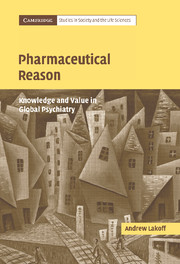Introduction: specific effects
Published online by Cambridge University Press: 22 September 2009
Summary
“To want to be human has no scientific basis. It amounts to sheer dilettantism.”
Niklas Luhmann.It is a Thursday morning in the psychopathology ward of Hospital Romero, and potential DNA donors have come in for their appointments. Romero is a public hospital in a working-class neighborhood of Buenos Aires, serving poor patients from outlying areas of the city. The psychopathology ward is taking part in a collaborative investigation with a French biotechnology company to find genes linked to bipolar disorder. The doctors are to make diagnoses and gather blood samples from two hundred patients, in exchange for a hundred-thousand-dollar donation from the biotech company. DNA is extracted from these samples at a nearby laboratory, and then sent by courier to the company's research campus outside of Paris. There, the company will seek to find and patent genes linked to susceptibility to the disorder. But the immediate problem for doctors at the hospital is how to know who has the disorder, in the absence of physically measurable signs and symptoms.
Gustavo Rechtman, a staff psychiatrist, is screening potential subjects. In one examination, a young woman does most of the talking, rapidly and in disjointed bursts. She is a psychoanalyst, she explains, and so she does not believe in genetic explanations for mental illness. But a patient of hers who had read about the study in the newspaper told her that she had certain characteristics that seemed like they could be “bipolar,” so she decided to come – just in case, out of curiosity.
Information
- Type
- Chapter
- Information
- Pharmaceutical ReasonKnowledge and Value in Global Psychiatry, pp. 1 - 17Publisher: Cambridge University PressPrint publication year: 2006
